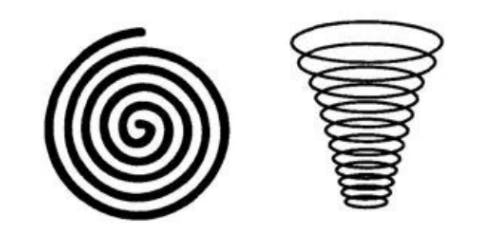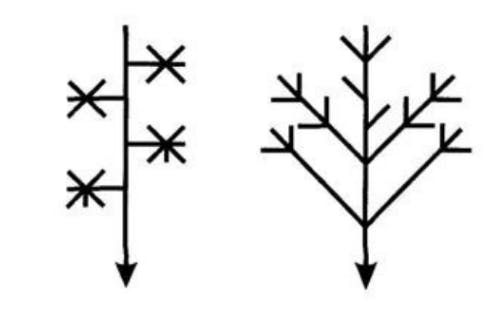Within the earlier article Theme, Values and Morale Debate, we noticed the significance of the message of your story, and learn how to ship it correctly — if you happen to’ve not learn it but, I counsel you learn it earlier than this one since that is the continuation.
Now we have seen on this previous article the significance of construction in exploring your ethical debate.
On this article, we’ll take a look on the several types of constructions {that a} story may be constructed with. However earlier than this, I’ll introduce you to the bottom that each one tales share.
The story in 3 acts and the schéma quinaire
For hundreds of years, narrators have agreed to decompose their tales into 3 acts.

-
The setup. This primary act is made to arrange your world, your major character, his aim, and the plot. It’s thought of because the act of presentation.
-
The confrontation. This second act is the longest one and is stuffed with occasions. An important occasion is the one throughout which your major character will notice that he cannot attain his aim, and why.
-
The decision. It’s on this final act that your major character will succeed, or not, to succeed in his aim. Extra usually, there’s additionally a brief epilogue displaying the implications of this story in your major character’s life.
This quite simple decomposition of the story won’t ever be false and can at all times allow you to construct a narrative with good bases.
Nevertheless, we are able to additionally decompose a narrative into 5 components.
The “schéma quinaire” — that we are able to translate as “the quinary scheme” — comes from the ebook L’analyse (morpho)logique du récit written by Paul Larivaille.
It is a faculty of thought that decomposes the story into 5 components :
- The preliminary scenario. The half during which the world and characters are launched.
- The set off. The half throughout which an occasion will disrupt the preliminary scenario.
- The motion. The half throughout which the principle character will attempt to remedy the disturbance.
- The decision. The implications of the actions.
- The ultimate scenario. The results of the decision, resulting in a brand new stability.
Furthermore, Larivaille thinks additionally that it’s potential to repeat an element a number of instances. Extra usually, the half repeated would be the motion. By repeating this half, you’ll be able to present how tough it’s on your major character to resolve the disturbance.
Although I’ve offered you with two alternative ways to decompose your story, it doesn’t suggest that you would be able to’t use each in your story.
In a approach, they’re very comparable. The primary act corresponds to Larivaille’s preliminary scenario, the second act corresponds to the set off and the actions, and the third act corresponds to the decision and the ultimate scenario.
- Key level: if you happen to respect these components or acts, your plot will naturally turn into an increasing number of intense, till the climax.
The climax is a very powerful and thrilling a part of your story that occurs on the finish of the 2nd act (or in the course of the 4th half). For instance, in a superhero film, it is the ultimate battle between the hero and his enemy.
After this, within the third act — or the fifth half — the depth of your story falls again to the identical stage that it was at to start with of your story.
Now that you’ve the bottom, let’s have a look at alternative ways to construction your story.
The linear story

The linear story is the commonest one. The principle character pursues his aim with depth till he has to frontally face his antagonist to succeed in it.
In one of these story, the whole lot is evident. Targets, values, difficulties. It assures you to simply ship the message of your story.
- Key level: a transparent story doesn’t suggest a simplistic story. You’ll be able to add a variety of complexity to your story exterior than from the construction.
You will discover one of these story in most Hollywood motion pictures.
The linear story matches very nicely with tasks which have a transparent aim for his or her neighborhood. It’ll permit individuals to simply comply with you within the story you’ll inform them, and play the half you need them to play.
Nevertheless, if you wish to develop a wealthy lore round your mission, the linear story is probably not the best choice. It’s too centered on one character, going straight to his aim with out exploring many components of his world.
The meandering story

In contrast to the linear story, within the meandering one the principle character does not pursue his aim with depth, despite the fact that he has a transparent one.
That’s the reason he’ll encounter a variety of totally different individuals, usually, in a variety of totally different areas of the world you created — additionally named the “area” by writers — and be taught so much about himself by way of the others. Extra usually, this introspection leads the principle character to succeed in his aim.
You will discover one of these story in a variety of myths, just like the Iliad.
The meandering story matches very nicely with tasks which have a developed however completed lore. It’ll mean you can discover all of the components of your area and go deeply into your major character’s ideas.
It’s a good compromise if you wish to develop a wealthy lore however nonetheless deal with the principle character. However, it might annoy your neighborhood to comply with a personality that does not pursue his aim with depth.
You will must stability between exploring your lore and transferring towards your character’s aim.
The spiral story

The spiral story is much less widespread and doubtless much less made for a mission’s storytelling.
In one of these story, the plot usually comes from one specific second that your major character should revive a number of instances (by way of a dream for instance) to grasp and remedy the thriller coming from this second.
You will discover one of these story in thrillers like Memento (Christopher Nolan, 2000).
One of these story matches completely with tasks that depend on a thriller. Nevertheless, your mission can turn into a bit repetitive. You will must completely grasp the artwork of storytelling if you wish to use one of these story.
The branching story

Within the branching story, every department represents a whole society or part of your lore’s society.
One of these story is near the meandering one, nevertheless, it isn’t essentially centered on one major character touring by way of the branches, it may be a separate story with entire new characters for every department.
These tales should at all times be linked with the principle story, just like the trunk of a tree. Every story brings a bit that may assist individuals perceive and uncover the principle story.
You will discover one of these story in areas opera, or Gulliver’s Journey (Rob Letterman, 2010).
The branching story matches very nicely with tasks that develop complicated lore that could possibly be developed indefinitely. It’ll mean you can discover your complete lore and take time to go deeper into it. Nevertheless, you’ll need a neighborhood that loves to find as a result of they may really feel bored not following a personality with a powerful aim.
However, it’ll mean you can inform a number of tales within the principle one, so you’ll be able to inform these tales in several methods and use the linear story to at all times catch your viewers’s consideration.
The mysteries
Though all these constructions are totally different, they share the identical aim: exploit the mysteries of your story.
As a result of all of the tales share a minimum of one thriller: how will the principle character attain his aim? That is the good thriller that your plot guarantees to reply. And earlier than answering it, you’ll need to create different mysteries.
Mysteries are one of many keys to creating an fascinating story, and it is much more necessary for a mission’s advertising. Advertising is meant to captivate individuals and get them involved in your mission. For this, presenting a narrative and promising mysteries round it is extremely environment friendly.
However as you have been capable of learn it, some constructions exploit mysteries in a greater approach. For me, one of the best construction concerning that is the spiral one, despite the fact that I additionally assume it’s the hardest one to make use of to market a mission.
However, the linear construction guarantees readability and effectivity. Nevertheless it doesn’t suggest that you must rush from the start till the tip. As stated earlier on this article, many of the motion pictures have a linear construction however are additionally filled with mysteries.
- Key level: on the finish of your story, all a very powerful mysteries must be solved.
The unsolved mysteries can depart your viewers wanting extra, which is an effective factor, however it might probably additionally depart an impression of one thing unfinished. It’s actually necessary to know which mysteries must be solved, and which one can keep unsolved.
Additionally, it is very important give some keys to your viewers to resolve the mysteries. Not all of them, in any other case they will guess the next of your story and thus lose all curiosity in it.
However if you happen to do not give a few of these keys, the revelations will appear inappropriate and spoil the viewers’s satisfaction.
Relating to a narrative, and largely its construction and mysteries, it is all about stability.
Now that this..
Let’s select our construction
Be aware: in every article of the collection, there might be this half the place I’ll create lore for an imaginary mission. Any resemblance with an present mission is coincidental.
The Odyssey is a fictive mission for which I’ll use the designing precept of The 12 Labors of Hercule.
Within the fable written by Homer, The Odyssey, the construction used is the meandering one, like in The Iliad. Hercules and Achilles journey to a variety of locations, encounter a variety of characters, and reside a variety of adventures.
Nevertheless, I will not use the identical construction as my major inspiration and go for the linear one.
I need the mission neighborhood to be concerned on this story and comply with Kyou in his journey with enthusiasm. That is why I feel that the easiest way to inform this story is by utilizing the linear construction.
- Key level: there isn’t any good or unhealthy construction, there are solely constructions that may match nicely or not with the story you inform.
To conclude..
Now that you understand how to construction your story, we’ll take a look at learn how to write characters within the subsequent half: The Characters of Your Story – Methods to Apply Storytelling to Your Venture, Half 4









